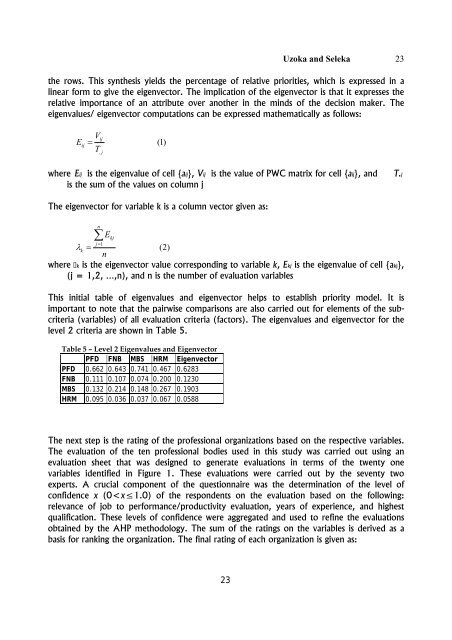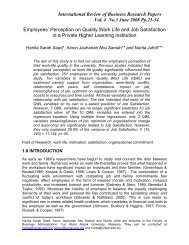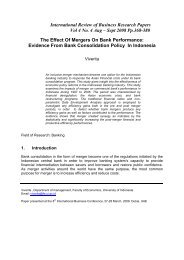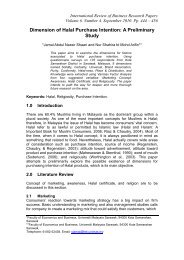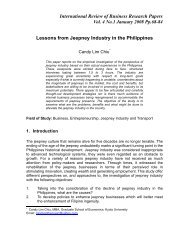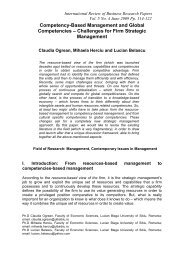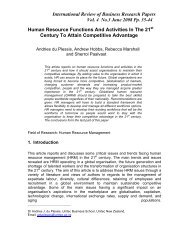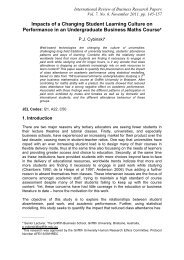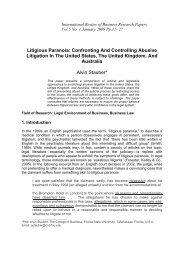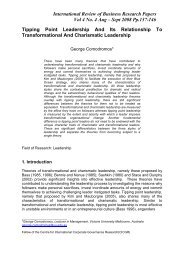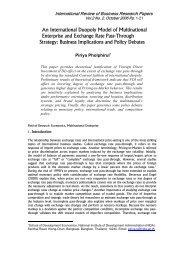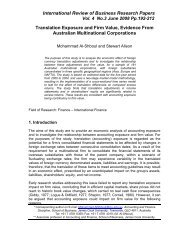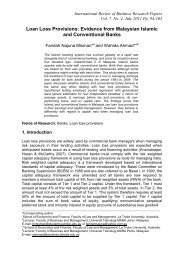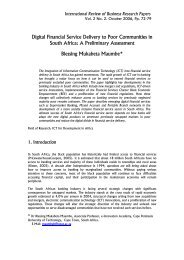A Model for Evaluation of Professional Organizations Using AHP ...
A Model for Evaluation of Professional Organizations Using AHP ...
A Model for Evaluation of Professional Organizations Using AHP ...
You also want an ePaper? Increase the reach of your titles
YUMPU automatically turns print PDFs into web optimized ePapers that Google loves.
Uzoka and Seleka 23the rows. This synthesis yields the percentage <strong>of</strong> relative priorities, which is expressed in alinear <strong>for</strong>m to give the eigenvector. The implication <strong>of</strong> the eigenvector is that it expresses therelative importance <strong>of</strong> an attribute over another in the minds <strong>of</strong> the decision maker. Theeigenvalues/ eigenvector computations can be expressed mathematically as follows:VEij=Tij. j(1)where E ij is the eigenvalue <strong>of</strong> cell {aij}, Vij is the value <strong>of</strong> PWC matrix <strong>for</strong> cell {aij}, andis the sum <strong>of</strong> the values on column jT.jThe eigenvector <strong>for</strong> variable k is a column vector given as:n∑Ekjj = 1λk=(2)nwhere k is the eigenvector value corresponding to variable k, Ekj is the eigenvalue <strong>of</strong> cell {akj},(j = 1,2, …,n), and n is the number <strong>of</strong> evaluation variablesThis initial table <strong>of</strong> eigenvalues and eigenvector helps to establish priority model. It isimportant to note that the pairwise comparisons are also carried out <strong>for</strong> elements <strong>of</strong> the subcriteria(variables) <strong>of</strong> all evaluation criteria (factors). The eigenvalues and eigenvector <strong>for</strong> thelevel 2 criteria are shown in Table 5.Table 5 – Level 2 Eigenvalues and EigenvectorPFD FNB MBS HRM EigenvectorPFD 0.662 0.643 0.741 0.467 0.6283FNB 0.111 0.107 0.074 0.200 0.1230MBS 0.132 0.214 0.148 0.267 0.1903HRM 0.095 0.036 0.037 0.067 0.0588The next step is the rating <strong>of</strong> the pr<strong>of</strong>essional organizations based on the respective variables.The evaluation <strong>of</strong> the ten pr<strong>of</strong>essional bodies used in this study was carried out using anevaluation sheet that was designed to generate evaluations in terms <strong>of</strong> the twenty onevariables identified in Figure 1. These evaluations were carried out by the seventy twoexperts. A crucial component <strong>of</strong> the questionnaire was the determination <strong>of</strong> the level <strong>of</strong>confidence x (0


